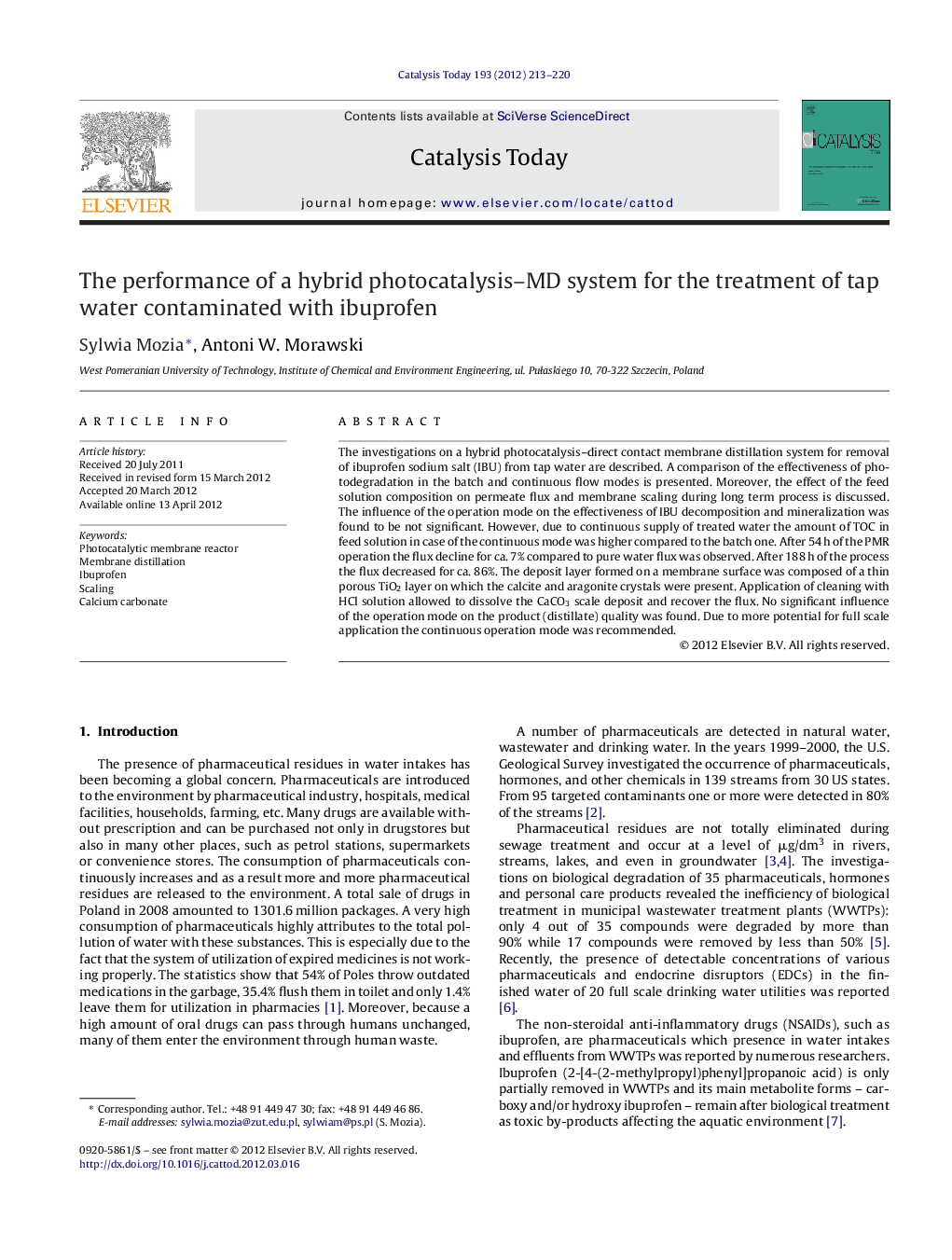| Article ID | Journal | Published Year | Pages | File Type |
|---|---|---|---|---|
| 55084 | Catalysis Today | 2012 | 8 Pages |
The investigations on a hybrid photocatalysis–direct contact membrane distillation system for removal of ibuprofen sodium salt (IBU) from tap water are described. A comparison of the effectiveness of photodegradation in the batch and continuous flow modes is presented. Moreover, the effect of the feed solution composition on permeate flux and membrane scaling during long term process is discussed. The influence of the operation mode on the effectiveness of IBU decomposition and mineralization was found to be not significant. However, due to continuous supply of treated water the amount of TOC in feed solution in case of the continuous mode was higher compared to the batch one. After 54 h of the PMR operation the flux decline for ca. 7% compared to pure water flux was observed. After 188 h of the process the flux decreased for ca. 86%. The deposit layer formed on a membrane surface was composed of a thin porous TiO2 layer on which the calcite and aragonite crystals were present. Application of cleaning with HCl solution allowed to dissolve the CaCO3 scale deposit and recover the flux. No significant influence of the operation mode on the product (distillate) quality was found. Due to more potential for full scale application the continuous operation mode was recommended.
Graphical abstractFigure optionsDownload full-size imageDownload high-quality image (250 K)Download as PowerPoint slideHighlights► Photocatalytic membrane reactor utilizing membrane distillation. ► Treatment of water contaminated with a pharmaceutical. ► Permeate flux decline during long term operation. ► TiO2 photocatalyst prevents from deposition of CaCO3 inside the membrane pores.
